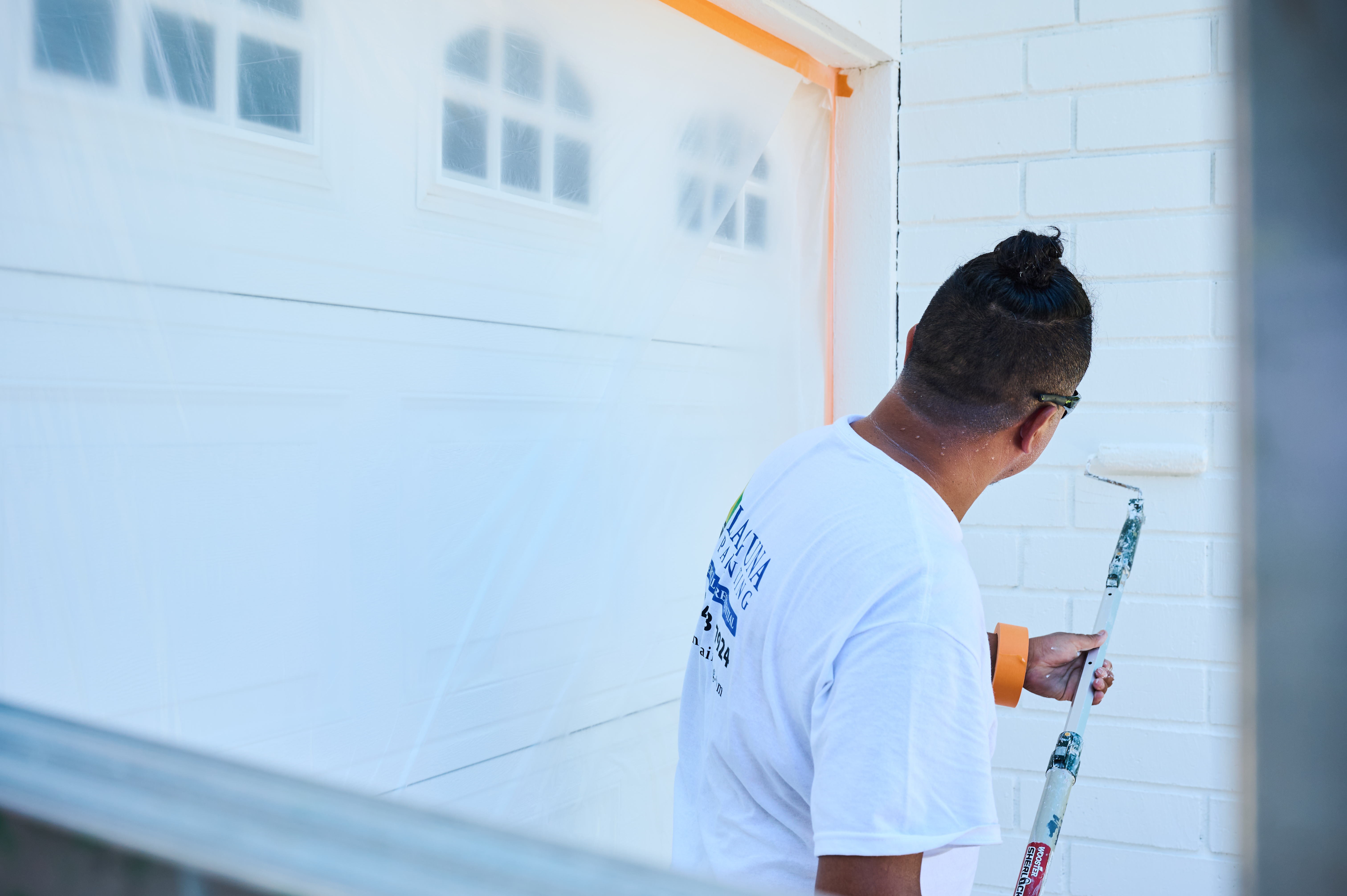
The cost to paint the interior of a house in Austin, TX depends on size, layout, type of surface, and more. Learn what factors can influence your total in this guide.
Open with care to keep the color in the can


When your paint is mixed and canned, it’s carefully sealed to prevent any splashes on the drive home. However, learning how to open a paint can is essential to ensuring you break the seal cleanly. Being too aggressive when opening can leave a spill or splash. Yes, it’s a beautiful color, but probably not what you were thinking for your driveway or living room floor.
Learn to carefully open your paint can so you don't damage it or cause a mess. If you don’t finish your project in one day, you’ll need to reseal the can ahead of your second coat or touch-ups. If you don’t use it all, don’t worry—you can use leftover paint creatively.
If you don’t own a flathead screwdriver, you can use a putty knife to pop the lid off a paint can. Other tools such as a 6-in-1 painter’s tool or a designated paint can opener from your local hardware store also work. You can also use household items like the edge of a spoon or a pocket knife to open a can of paint if you run out of other options.

To start, place one hand on top of the can. Then wedge your paint can opener, flathead screwdriver, or putty knife between the rim of the can and the lid.
If you use a putty knife, ensure it’s stiff. A flexible one might be good for other jobs, but it won’t be effective in breaking a paint can seal.
Gently push down on the paint can opener tool handle to pry the lid away from the can, breaking the seal. You may need to repeat this step a few times to unseal a stubborn lid.

Gently run your screwdriver around the can, opening the seal evenly. Often, people turn the can an inch and repeat the second step. But this prying motion can bend or damage the lid of the can, preventing the lid from going back on with a nice seal.

Once you’ve worked your way around the can, lift the lid off slowly. Make sure you’re wearing gloves, or you’ll get paint on your fingers.
No, we’re not talking about breaking out an actual label maker. But it’s helpful to add a dab of paint onto the can’s lid so you can know what color is inside for future use.
It’s also helpful to add a note like “living room trim” when your hands are clean. Paint can last 10 years; that’s enough time to forget what’s in the can. Then place the lid in a plastic bag to prevent it from getting messy.
Now for a trick from the pros: Puncture a few holes inside the gutter of the paint can. This painting technique will allow any paint that gets in that groove to drip back into the can where it belongs. It’ll go a long way toward keeping your can (and potentially floor) clean.
When you’re done painting for the day, it’s time to replace the lid. Place it on the can as straight as possible. To reseal it, drape an old towel over the top and use a hammer (or any heavy object) to pound it on tight. The towel will help prevent dents in the can from your hammer.
Make things easy on yourself and have a towel and hammer ready when you open the paint. That way, you don’t have to carefully run through the house–with splotches of paint on your pants–to find them later. If you hire a local interior painter to paint your home, remind them to reseal the leftover paint so you can use it for future touch-ups.
From average costs to expert advice, get all the answers you need to get your job done.

The cost to paint the interior of a house in Austin, TX depends on size, layout, type of surface, and more. Learn what factors can influence your total in this guide.

The cost to paint the interior of a house in Indianapolis, IN depends on size, layout, type of surface, and more. Learn what factors can influence your total in this guide.

The cost to paint the interior of a house in Denver, CO depends on size, layout, type of surface, and more. Learn what factors can influence your total in this guide.

Painting can be a tedious job, but it all comes down to the tools you use. Learn whether it’s better to use a paint sprayer or roller to get the job done.

Want a unique, natural look for your interior or exterior walls? Limewashing is a DIY-friendly option. Learn how to limewash walls with this guide.

No one wants a bathroom with peeling paint and mold buildup. Picking the best paint for bathrooms helps you steer clear of these shower room setbacks.